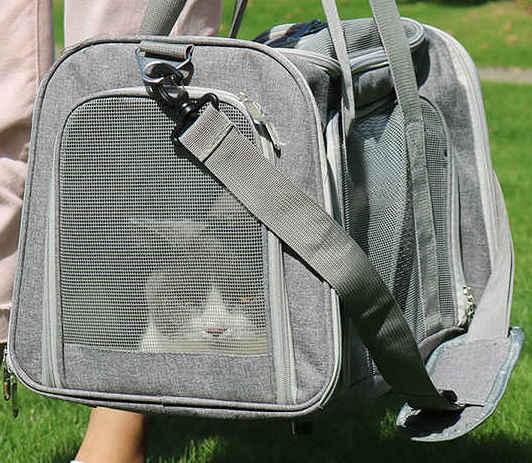Pet carriers can be a lifesaver when you need to take your dog or cat to the vet or groomer, but shopping for one can be overwhelming with so many different choices available on the market today. Choosing the right pet carrier will depend on what you need it for and what your budget looks like, so here are some important features to look out for if you’re in the market for one of these useful products.
How much space you need
If you’re planning on travelling with your pet, you want to be sure that your carrier will hold your pet comfortably. A good rule of thumb is two inches per pound of your pet. For example, if you have a ten-pound cat, you’ll need a carrier that provides at least 20 inches of room inside. If not, it’s likely that your kitty won’t be comfortable in its container for long periods of time—which isn't great if it's already anxious about being away from home!
Some carriers are made specifically for small dogs while others can only accommodate larger dogs. Choose carefully, as you don’t want your pet feeling cramped during travel or escape its carrier once it arrives at its destination.
Travel Considerations
If you’re traveling with an adult dog or cat, you can use airline pet carrier dimensions as guidelines for choosing a hard-sided pet carrier. For instance, if your pet is at least 9 inches tall, it could fly in an 8x11x16-inch kennel. Always check with individual airlines to see what their restrictions are when it comes to carrying pets. Also consider if your pet will need extra space inside its carrier due to long fur; dogs with thick coats may need more space because they'll feel hot during their journey. Keep in mind that if you’re traveling internationally, certain types of carriers aren't allowed on board by certain airlines—so make sure you're familiar with your airline's policies before booking travel.
Style - Hard-sided or Soft-sided
Soft-sided pet carriers are great if you're looking for something compact and portable, or if you don't need to bring your pet along on long trips. Soft-sided carriers also have mesh windows, so it's easy to check in on your furry buddy without opening up the entire carrier. Soft sided & Collapsible pet carriers are best if you have multiple animals or have limited storage for your carriers. Another great feature of soft sided carriers is that they often have multiple openings from either side & the top so it makes it much easier to load an unload your pet than it would with a tradition hard-sided carrier. Check out the Henkelion Cat Carriers Dog Carrier Pet Carrier, its has a soft interior pad, multiple mesh windows, it's airlined approved (the smaller model), made of a TOUGH polyester material and machine washable!
However, soft-sided carriers aren't as sturdy as hard-sided ones and aren't suitable for very large pets that may be uncomfortable in tighter quarters. On long trips (or even short ones), it's important that your pet is comfortable enough so she can relax, sleep or play once she reaches her destination. Hard-sided pet carriers are much more durable than soft ones, which means they'll last longer—and you won't have to replace them every few years.
Materials
When picking out a pet carrier, you want to make sure it’s made of sturdy materials that can withstand your dog or cat’s desire to escape. If you do choose a soft sided carrier make sure it constructed of a strong canvas / polyester type fabric that wont rip easily. Also, remember that high-quality carriers typically cost more than bargain versions, but they may be worth it to you. With more expensive models, there is no need to worry about broken clasps or straps. Collapsible carriers are a good idea in order to save on space when not in use, however, plastic hard-sided ones can withstand a very feisty pet and anything landing on them during travel.
The proper carrier is essential for safely transporting your pet. However, it can be difficult to determine which carrier is best, especially when faced with a multitude of options in different shapes, sizes and materials. The first thing you should do when choosing a cat or dog carrier is figure out what your primary needs are. Do you want something lightweight that will fit into an already-crowded trunk? Or would you prefer a sturdy case that can withstand being stuffed under seats on an airplane? If you have any special circumstances (airline travel, particularly) make sure those requirements are taken into account as well. Then it's just time to compare specifications until you find what works best for you!


Leave a comment: